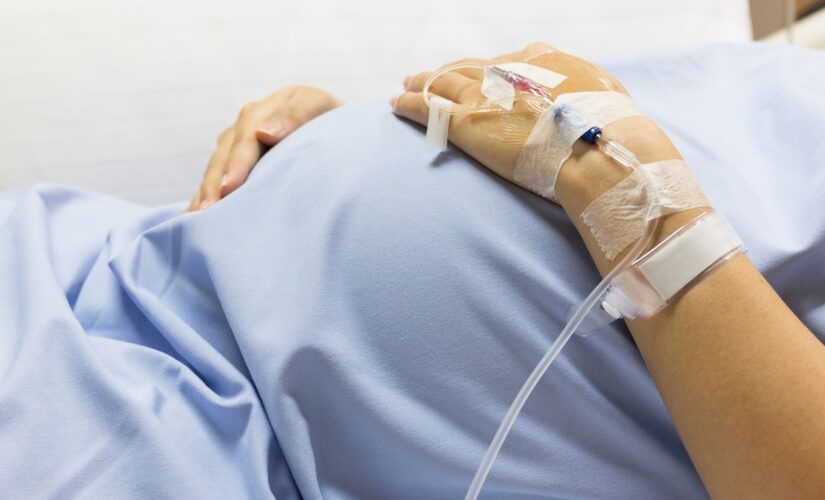A new medical study conducted in Europe is suggesting there may be fewer “adverse pregnancy outcomes” for women who get pregnant weeks after they’ve had a miscarriage or an abortion.
The cohort study, which was conducted by various academic researchers from around the world, analyzed pregnancies in Norway to see if the World Health Organization’s (WHO) recommended six-month waiting period after a miscarriage or induced abortion in order to lower the chance of a pregnancy complication.
Adverse pregnancy outcomes the WHO’s guidance reportedly aims to prevent include preterm births, spontaneous preterm births, small for gestational age births, large for gestational age births, preeclampsia (high blood pressure) and gestational diabetes mellitus diagnoses.
WOMAN, 22, WHO SAYS GYNECOLOGIST DENIED HER A TUBE-TYING PROCEDURE, SPEAKS OUT
The study investigated the risk of adverse pregnancy outcomes post-pregnancy loss because the evidence “underlying [WHO’s] recommendation is scarce” and may not pose as much of a risk as previously thought.
A new study suggests women who get pregnant in under 6 months of a miscarriage or abortion may not have high risks of “adverse pregnancy outcomes.”
(iStock)
The study’s findings were published in PLOS Medicine, a peer-reviewed medical science journal, on Tuesday, Nov. 22.
Researchers studied 72,765 birth records from three Norwegian health registries from Jan. 1, 2008, to Dec. 31, 2016, including the Medical Birth Registry of Norway, the Norwegian Patient Registry and the General Practitioner database.
The interpregnancy interval (IPI) and the six adverse pregnancy outcomes were analyzed separately for births that happened after miscarriages (total of 49,058) and births that happened after induced abortions (total of 23,707) within the eight-year period.
The birth-related patient records were analyzed for maternal age, gravidity, the year they gave birth, smoking status during pregnancy and pre-pregnancy body mass index.
Researchers sorted and compared pregnancies that occurred in less than three months after a pregnancy loss, three to five months after a pregnancy loss, six to 11 months after a pregnancy loss and more than a year after a pregnancy loss.
The six adverse pregnancy outcomes were examined and calculated for each interval group.
Researchers examined 72,765 birth records from Norway to see if women experienced “adverse pregnancy outcomes” when they conceived in under six months after a miscarriage or abortion.
(iStock)
Women who got pregnant in under three months or three to five months after a miscarriage reportedly had lower risks of small for gestational age births at 8.6% and 9%, respectively.
Pregnancies that happened in less than three months after an induced abortion were “associated with a nonsignificant but increased risk of [small for gestational age births]” at 11.5% compared to those who got pregnant after six to 11 months (10%).
MORE COLLEGE-EDUCATED WOMEN ARE HAVING BABIES BEFORE MARRIAGE: STUDY
Conversely, women who got pregnant within three to five months after an induced abortion had a lower risk of large for gestational age births (8%) compared to those who got pregnant after six to 11 months (9.4%).
Instances of gestational diabetes mellitus were found to be lower in women who got pregnant in less than three months of a miscarriage (3.3%) compared to women who got pregnant within six to 11 months of a miscarriage (4.5%).
“There was no evidence of higher risks of adverse pregnancy outcomes among women with an IPI of greater than 12 months after miscarriages or induced abortions,” the study claims.
The World Health Organization advises women to wait at least six months before attempting a planned pregnancy if they’ve had a miscarriage or induced abortion.
(iStock)
Though, there were observable exceptions to “an increased risk of gestational diabetes mellitus among women” who got pregnant 12 to 17 months (5.8%), 18 to 23 months (6.2%) and more than 24 months (6.4%) after a pregnancy loss compared to those who got pregnant six to 11 months (4.5%) after a miscarriage.
CLICK HERE TO GET THE FOX NEWS APP
Researchers also state that their findings suggest that pregnancies that occurred “within six months” or “as short as three months” weren’t “associated with adverse pregnancy outcomes.”
The interpregnancy interval study found that three out of five Norwegian women who experienced a miscarriage conceived within six months while one of five Norwegian women who underwent an induced abortion conceived within six months.
“Our study suggests that conceiving within three months after a miscarriage or an induced abortion is not associated with increased risks of adverse pregnancy outcomes,” the study concludes. “In combination with previous research, these results suggest that women could attempt pregnancy soon after a previous miscarriage or induced abortion without increasing perinatal health risks.”
Authors of the study noted that the researched results “do not support current international recommendations to wait at least six months after a miscarriage or an induced abortion,” but the “differences in pregnancy outcomes according to interpregnancy interval after miscarriage as opposed to induced abortions remains unclear.”
Researchers have reportedly found that pregnancies that happen within six months of a pregnancy loss aren’t associated with higher risk of “adverse pregnancy outcomes.”
(iStock)
The study says its findings should motivate a review of current guidance on birth spacing after miscarriage or induced abortion from international health agencies.
FOLLOW US ON FACEBOOK FOR MORE FOX LIFESTYLE NEWS
The interpregnancy interval study was funded by the Research Council of Norway — a Norwegian government agency — through its Centre of Excellence, which provides long-term funding for targeted research on complex problems, according to the Norwegian University of Science and Technology.
Fox News Digital reached out to the WHO for comment.
The full study can be found on journals.plos.org.




